Expert panellists at Automotive Logistics & Supply Chain Global 2023 explained current FVL capacity woes, mitigation strategies and why the issue will not be resolved any time soon. Daniel Harrison analyses how the FVL industry can work together to implement short-term solutions now, and begin planning for the future.
Contents:
- Quick wins, visibility and collaboration
- Prioritisation of vehicles
- Labour shortages and driver retention
- Organic and acquired fleet improvements
- Digitalisation
- Long lead times for new capacity
- Network design
- Partnering in non-conventional ways
- Creative solutions
- Stakeholders working together
- Combining predictive learning and partnerships
- Containerisation as a temporary solution
- Long-term, flexible contracts
- Conclusion
After inbound supply chain disruptions through Covid and semiconductor shortages, finished vehicle logistics has now become one of the leading problems impacting customer order fulfilment due to capacity constraints. In that context, FVL logistics has moved up to a board level issue. However, the indicators are that the entrenched capacity shortages are difficult to resolve quickly. The panellists at the recent ALSC Global 2023 event explored the current challenges and future outlook for easing the FVL capacity crisis in North America.
Paul Roosen, vehicle logistics planning manager for North America at Ford Motor Company revealed that compared to pre-Covid times, the carmaker is “operating at about 20% off where we were” in terms of reliability. For railcar order fulfilment, he said Ford’s lead times are 35% higher, and that the industry is “operating in a difficult environment”.
Therefore, many of the FVL challenges are the direct result of the Covid crisis where FVL providers cut back on fleets, labour and capacity and are struggling to quickly re-establish that capacity, given limited capital and labour shortages. However, many FVL capacity constraints are also more long-term, entrenched and structural issues that don’t have any easy or immediate solution.
Capacity shortages are improving in certain areas, modes and pinch points, as Nick Thompson, head of Vehicle Logistics, Stellantis North America said. “From a Stellantis perspective, we have seen progress in really all the modes,” he said. “I mean we still have issues, especially down in Mexico, but I think we have seen in central North America we have better order fulfilment from a rail perspective. But the edges, like Mexico and Canada are still a bigger issue.”
Thompson added that there are some improvements in road haulage, but ocean shipping may have a way to go. “From a truckload side, I would say we have seen capacity a little bit more readily available than it used to be a couple of years ago, so I think that’s a good trend,” he said. “On the ocean side we are still seeing issues with certain lanes, but I also feel that’s kind of going in the right direction too with some of the things we have done to secure capacity long-term.”
Quick wins, visibility & collaboration
The entrenched capacity issues, particularly in rail, are likely to only be resolved in the longer-term. The chairman of the Surface Transportation Board (STB), Martin Oberman, told ALSC Global delegates that automotive shippers should push the STB for reform in railroad freight in the US, but this is not likely to happen anytime soon, as many OEMs are hesitant to speak up about rail problems for fear of retaliation from the limited rail providers.
In terms of more immediate quick wins there are several strategies that logistics providers can implement to mitigate against capacity shortages.
Ford’s Roosen said: “I think it helps to streamline and digitalise your supply chain and your inventory and get visibility from production that’s not shippable all the way to the dealers. We have been partnering with several suppliers and getting them integrated into our systems. That’s been helpful, and I think we need to take it to the next level.”
The entire issue of digitalisation has been widely discussed, but rather than implementing it in a siloed manner, doing so in a collective, industry-wide way is essential for it to be effective. Stellantis’ Thompson said: “We are working collectively as an industry, not just for our supply chain, but collectively since we share a lot of the resources. We can continue to make strides on that. We are all dealing with events now, whether it’s a border crossing that gets closed or a weather event. It’s important for us all to understand how we impact each other and so greater visibility on that helps.”
Prioritisation of vehicles
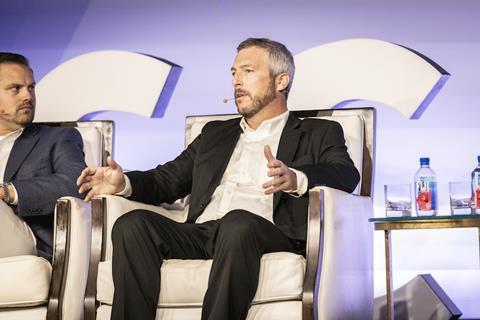
Aside from fleet investment and infrastructure, another strategy increasingly being talked about is expediting vehicles to prioritise sold vehicles within the FVL flow. This is something that Stellantis’ Thompson suggested. “We can focus on being more surgical on execution for the vehicles for our customers,” he said. “We do have these challenges with the different modes, but the [delivery] day of the vehicles all being the same and that same expectation from the customer has changed. I think you have certain vehicles that have a higher priority, and there is room now to make sure those sold orders are getting through the supply chain faster. And so there’s a lot of work we are doing to improve that process at Stellantis with our suppliers.”
And it’s not just OEMs who take this view. Logistics service providers (LSPs) are now using data to prioritise certain vehicles, according to Sarah Amico, executive chairperson, Jack Cooper. She said that the North American vehicle hauler is making sure it shares “complete transparency and visibility” with its customers by making performance metrics and geolocation data visible in real-time. “This makes sure that when you have the hot units, things that are a priority, you can get them to where they need to go in a good manner,” she said.
Labour shortages and driver retention
Another key aspect of improving capacity is improving the pool of labour – more specifically truck drivers and railroad drivers – and that is not only about recruitment, but also retention through making the pay and conditions as attractive as possible for employees.
Amico observed that this has been Jack Cooper’s focus recently. “Certainly in the truck driver space, it’s writ large, the truck driving industry has a real shortage of drivers, so a lot of our focus over the last four or five years has been on driver retention,” she said. “We have really worked to get our numbers up to 80% retention overall, but once they hit the one-year mark, we retain 95% of our drivers. You’ve got to do the recruitment efforts, and we have been working on that, but you’ve also got to make sure that when you have great talent in the door, you can keep them.”
Organic and acquired fleet improvements
Fleet investment and capacity expansion are being attempted though organic growth (within the existing company) or inorganic growth (through acquisition of other companies) or a mixture of both. But any type of fleet investment can have barriers, especially for smaller companies, according to Amico.
“There are a lot of challenges coming up. A lot of fleets may have been underinvested in during the pandemic, for obvious reasons, and now they are exiting the pandemic and supply chain crisis and in an inflationary environment where debt is very expensive, so financing equipment may be a challenge particularly for smaller carriers,” she said.
Jack Cooper has added around 600 new trucks to its fleet over the last few years, including 240 tractor-trailer units when it acquired the assets of Moore Transport earlier this year. Amico acknowledged that the sizeable investment is “not super common,” adding it could be “a real speed bump for a lot of the smaller fleet carriers”.
In that context, the highly fragmented automotive logistics sector naturally lends itself to acquisition of smaller players to achieve the economies of scale for investment and the resilience of a larger operation.
Amico said that acquisition of Moore Transport’s fleet helps Jack Cooper to achieve some of these objectives. “One of the ways we can provide efficiencies, from a cost perspective to our customer, without losing margin or losing our ability to access capital markets particularly after a tough couple of years, is to leverage economies of scale.This is the ultimate network economics business, where in theory, the bigger you get, the more efficient you can get.”
She explained that with the Moore Transport acquisition, which is one of the premier non-union companies, Jack Cooper converted their drivers into what they call ‘owner-drivers’.
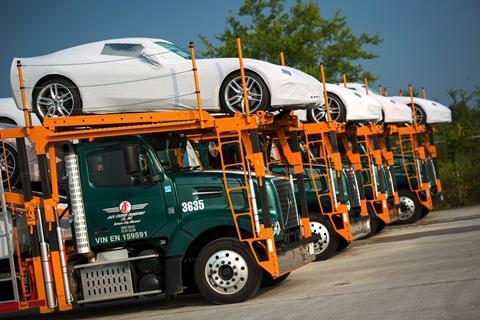
“They are union members, card-carrying Teamsters, but on a pay structure and a benefit structure that is much more like an owner-operator,” she said. “That’s given us an ability to be more competitive, but it’s also given us the ability to provide just-in-time capacity to meet a changing production capacity environment.”
Digitalisation
If fleet or capacity expansion isn’t possible, another key strategy to enhance the available capacity is the use of digital tools. Companies can optimise the use of existing fleets, often by finding pockets of under-utilised capacity to add speed and efficiency to the network, as Sean Baltazar, senior vice-president of sales at logistics service provider RPM said.
“We see a world in which fragmentation and volatility in variability in production are challenging traditional equipment that would haul this volume,” Baltazar said. “We’ve really started to get our arms around non-traditional capacity that can take these fragmented volumes and bundle it into a quality package that can support the traditional distribution I think that has challenged Sarah’s organisation [Jack Cooper] in certain pockets. But we find taking all the different destination points that this volume has to go to and efficiently sort of ‘Tetris-ing’ it together using technology and then giving the plan to the capacity to go and execute adds speed and efficiency to the network.”
Long lead times for new capacity
Of course, even if there is the capital and confidence to invest in new fleets to expand capacity, the reality is that many of those fleets take a long time to procure. And there are challenges in specific logistics modes, such as ocean shipping capacity, which has a range of issues including biosecurity, port congestion and other factors.
Furthermore, expanding capacity requires an ongoing dialogue with customers about their needs. For example, for shipping fleets, the vessel could be in use for 30+ years, and therefore its features, capabilities and specification need to be considered for a long period into the future.
Additionally, simply adding extra capacity needs to be considered within the wider context of port capacity, otherwise that vessel investment may not achieve the envisaged capacity improvement, as Oskar Orstadius, chief sales officer at Höegh Autoliners explained. “We have ordered new vessels, but it takes time, they’re not coming over a day,” he said, “although now we are counting months, not years, before we are getting more tonnage into our fleet.”
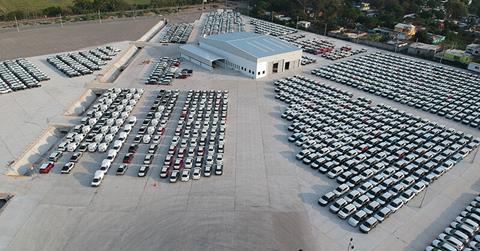
He said that despite the improvement in timing, it still requires “extraordinary measures and even closer dialogue with the customers”. He said: “Normal discussions always mean discussion around transit time and frequency, but that’s not the issue right now. It’s about clearance of volume, and how can we do that in the best way. At the same time, when we are adding more volume, we are facing the risk of not coming into the port to discharge, because then we are bringing more volume. So we must balance and combine the import and export to a broader and bigger extent than we used to.”
Network design
A further way to mitigate against capacity shortages is to optimise network design, and to think more broadly about new routes, new modes and new approaches to achieve this.
Ford’s Roosen gave an example of adapting network design within the OEM’s shipping. “We have been talking about in Mexico and the challenge and ability to get railcars down there,” he said. “We were historically shipping southbound short-sea out of the US East coast of US production down in Veracruz, and we thought it would be in our best interests to actually put those vehicles in railcars and fund our own railcar availability down in Mexico City.
“If you’re not getting the rail supply on your own, or from your providers, generate it yourselves. We are trying to expand upon that across our network.”
Another strategy is to break down approaches into the immediate-term network design and the long-term investments, agreements and partnerships that will be needed.
In the short term, the approach is more operational. Stellantis’ Thompson said: “We are having to look at the network design to work out how we can put things together differently. We’ve had to use some different ports in Mexico than we have historically, and we are using ocean differently than we have historically. So I think it’s forcing us to change from how we have always done it, and to work with our providers to figure out what those solutions are, here in the short term.”
He says the approach for the future is more strategic and involves working with critical partners to understand what investments and partnerships need to be in place. This includes discussing how to get better infrastructure in place such as rail services and improving cost efficiencies.
Partnering in non-conventional ways
When it comes to partnerships, logistics providers are experimenting by partnering in more innovative and creative ways to achieve common objectives. Jack Cooper’s Amico made the prediction that the industry will start to see carriers partnering in non-conventional ways with manufacturers in Mexico.
She said: “That could include anything from working together to finance equipment to meet needs, to outright partnering on certain ventures. Because the reality is that short-sea is tapped out. There isn’t adequate warehousing, there isn’t rail capacity coming out, and cross border and intra-Mexico even more so on the car haul side have been really challenging.”
She added that it’s going to take a collective effort to think outside the box. “We are going to have to roll up our sleeves and problem solve together and experiment,” she said, “but I think now is the time to put the biggest and boldest ideas on the table and try new things.”
Creative solutions
Innovation, creativity, technologies, and a wide range of solutions need to be explored to mitigate current capacity challenges.
Ford’s Roosen said he thinks solutions like dealer pick-up are options to explore, and said it is something that the carmaker is “trying to rapidly accelerate”. He said another idea is “driveway as a service, so rather than using traditional haulaway trailers, you’re tapping into rideshare technology, and looking at how to leverage Uber and Lyft”.
Roosen said that while it’s worth remembering that these creative solutions are not a panacea, they can help mitigate FVL capacity challenges to some extent. “Now it’s not going to solve everything,” he said. “Even if we can get to maybe 4% or 5% of our overall deliveries that are going through dealer pick-up or driveway as a service, that’s still 5% of volume that didn’t need to get on to a truck.”
In rethinking FVL, Stellantis’ Thompson said it also creates opportunities to minimise carbon emissions and wasted time. He said that the OEM is looking at where railcars terminate and having vehicles there for collection, rather than having railcars move to where the vehicles are.
“We’ve had to do that a little bit more, given some of the capacity constraints we have seen with rail,” Thompson said. “We are trying to put the pieces together a little bit differently to fill the gap right now. I would say that is also happening on the ocean side as well. We are partnering with some of our bigger vessel lines to ask where we can move, and then figuring out how to put the pieces together to get them to the final dealer.”
Stakeholders working together
One of the common sentiments conveyed by the panellists was that no single company can resolve capacity constraints themselves, and that this is an industry wide challenge that can only be achieved through a mixture of partnership, collaboration and communication.
Oskar Orstadius made this point well: “We cannot just solve this by ourselves. The terminal is allocating the car to the OEMs. It must be a very close communication, starting new flows, combining on export, also the import cargo finding alternative ports, but we are finding alternative ports already pretty congested. This will have a knock-on effect in the next load reading.
“Very often we work on this with OEMs, and they have a challenge in their congested port, but they also face a challenge on the next port, and so it’s a chain reaction. We can only solve that by working even closer together and finding new solutions together.”
Combining predictive learning and partnerships
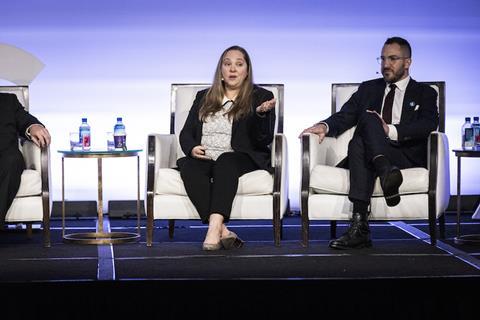
Partnerships go beyond simple collaboration. Those partnerships, in combination with machine learning and predictive analytics, are also critical in producing cost efficiencies. Because the network economics of logistics operations relies on the economies of scale, optimising the existing network could help avoid having to make cuts to that network.
Amico reinforced this point: “A lot of the efficiencies we can pick up using machine learning, such as predictive learning for traffic patterns or where gas prices are going to be the lowest for filling up. I think from the carrier side, finding as many of those places to get cost efficiencies as possible will become absolutely essential in the coming years, because those network economics are real.”
She said that if a network is pared down or made less efficient, costs will increase over time. “It’s usually an ebb and flow,” she said, “but I would much rather see us partnering with OEMs and companies like RPM to get that analytic predictability accurate, rather than take hatchets to the networks that are producing costs efficiencies.”
Containerisation as a temporary solution
Many operators in response to capacity shortages have explored using shipping containers for finished vehicles. There are many challenges around the practicality of this, but ultimately it is a cost issue, as containers are usually more expensive than using other modes.
Ford’s Roosen said that containers are becoming “more of a spot solution” to solve immediate capacity constraints. “You don’t plan your network to use them,” he said. “It’s slower, it’s costlier and it’s more labour intensive, and if you’re lucky you will get four vehicles in that container.”
Container shipping of finished vehicles is therefore considered as a last resort and OEMs are looking for other creative alternatives, by leveraging other parts of the network, or perhaps even creating their own charters.
“I think Ford is trying to reimagine or look for other alternatives,” Roosen said. “We’re looking at how can we use non-traditional shipping lanes to solve the problem. For example, from China to the US west coast, Lazaro’s congested and Mazatlan’s congested. So maybe OEMs are looking at putting them into containers, but I would argue to look at other US west coast ports from China into California, and then rail from California into Mexico, therefore generating more railcars terminating in Mexico to go back up into the US.”
Roosen added: “We’ve played in that space, we’ve used it on short notice, but in my opinion, OEMs are going to use it as a last resort. I would look for open roro lanes that could be leveraged with some of your ocean providers, and I think now OEMs are looking into vessel charters, crafting more of a holistic view, putting together key strategic ocean lanes and formulating your own trans-Pacific or trans-Atlantic loop that might yield better transit or freight efficiencies.”
Long-term, flexible contracts
There has been a gradual shift towards long-term contracts in automotive logistics. One of the main advantages with long-term contracts is that they provide more certainty for both parties and encourage more long-term approaches to investing in new capacity, new staff and towards a net-zero future.
In an audience poll at the start of the Automotive Logistics & Supply Chain Global 2023 conference, LSP delegates were asked what would give them greater confidence to invest in the North American automotive supply chain. In response, almost half (43%) said they wanted more long-term contracts and partnerships.
For example, for many ocean shipping carriers, short rates are too expensive and legacy contracts are not competitive. Höegh Autoliners’ Orstadius observed that “legacy rates do not support investment in vessels”. In that context, there has been a concerted move away from boiler plates in contracts that have typically been very one-sided in favour of the OEM. Instead, these contracts are now being formulated to be more balanced for both stakeholders.
Stellantis’ Thompson said long-term contracts are “definitely something Stellantis is looking at” and added that they “come with some payback period which works for both parties”.
Fundamentally, long-term contracts require a change of mindset, and can be viewed more holistically in terms of investment, margins and business confidence. They are generally welcomed by all stakeholders, as long as the terms are not too restrictive and allow some flexibility on both sides, given the inevitable changing prices, circumstances and scenarios that a long-term contract would have to endure.
For example, for road haulers, asset investment can be 15-20 years, as Jack Cooper’s Amico said. “They are long-term investments on the asset side, and that does play into how we think about margins, how we think about investment in our fleets and how we think about contracts,” she said. “I think you can play on all three of those fronts to get the right balance with the customer. We had a customer last week use the phrase ‘10-year contract’. That’s not something I had heard before, but we love it. So please do that more.”
Conclusion
In response to FVL capacity constraints, in the short-term logistics service providers are having to be highly creative, innovative and experimental to mitigate many of the industry challenges.
For the long-term, there needs to be more substantial investment, underpinned by improved visibility, partnerships, long-term contracts and relationships. While there may be no silver-bullet solution, the FVL industry can work together to provide both immediate and future solutions to help resolve and mitigate capacity constraints and ensure quicker, more efficient deliveries.
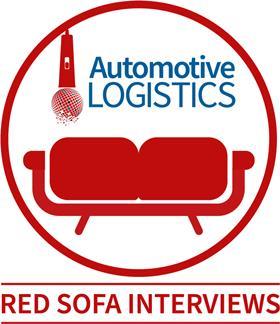
Daniel Harrison, automotive analyst, Automotive Logistics spoke to Christopher Ludwig, editor-in-chief about the highly fragmented North America logistics industry and capacity shortages in FVL in our Red Sofa interviews.
Watch his interview, and other expert speakers from ALSC Global 2023, here.
Topics
- ALSC Global 23
- Analysis
- Canada
- Cross-Border Logistics
- Deep sea
- Digitalisation
- Editor's pick
- features
- Finished Vehicle Logistics
- Ford
- Höegh Autoliners
- Inventory management
- Jack Cooper
- Mexico
- Nearshoring
- North America
- People
- Ports and processors
- Rail
- Road
- RPM
- Shipping
- Short sea
- Stellantis
- Supply Chain Planning
- Sustainability
- Technology service providers
- United States Of America





























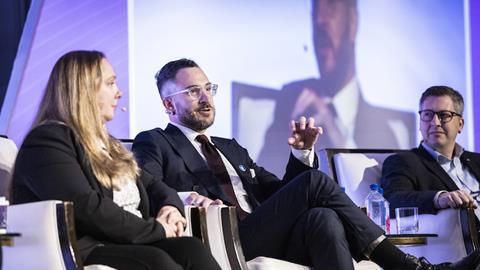
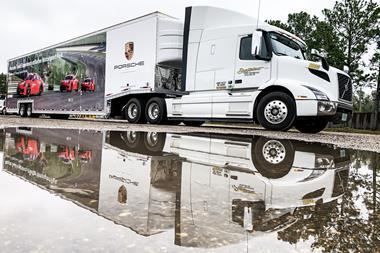



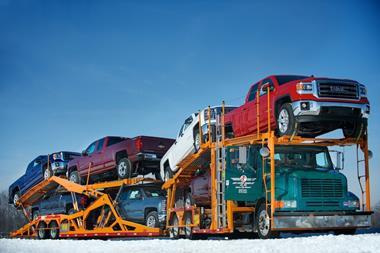




No comments yet